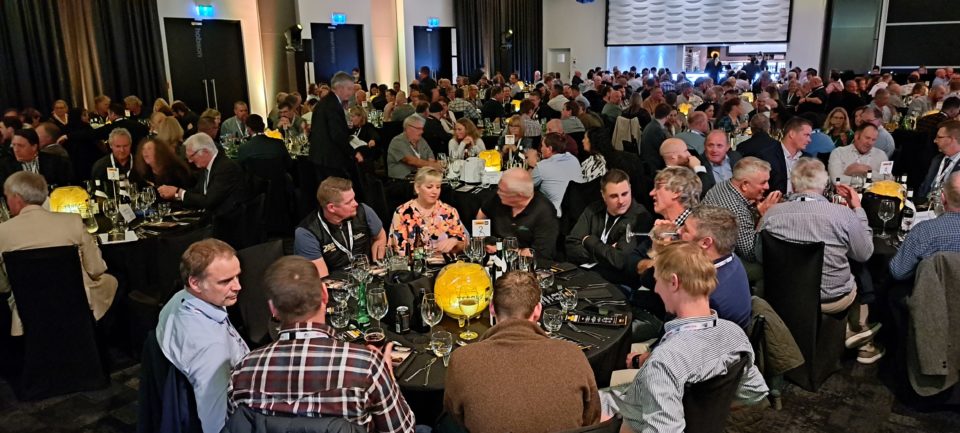Above: Terra Cat 2022 QuarryNZ conference Welcome Night in New Plymouth.
The quarry industry held its annual conference in Taranaki July 14-15 at a critical juncture for the sector and its fundamental role in literally laying the foundations for this nation in the past and for its future.
Aggregate and Quarry Association chief Wayne Scott describes the industry at a crossroads with some signals pointing positive and others mired in ongoing negativity and constraint towards quarries. The positives include the Government recognising quarries are fundamental to its $65 billion infrastructure programme and ambitions for housing.
“Quarries literally provide the foundations for every road and building. The Government’s Infrastructure Commission is leading the call in Wellington for RMA and other regulatory changes to get new quarries approved and existing ones reconsented without the usual years of delay and prohibitive costs.”
Scott adds that the Environment Minister David Parker also intervened to revise new regulations on ‘natural wetlands’ that would have stopped many quarries from expanding into areas with little or no environmental qualities.
“However, we have a major Auckland quarry extension halted by the current regulations. It may still be captured under proposed changes to the definition of a natural wetland due to a narrow list of pasture species, based on the Greater Wellington area. This will potentially see it close many years earlier than it might have with desperately needed hard rock resources left in the ground.”
This is the sort of environmental tug-of-war which so often has seen quarries unable to open or expand, especially in the main centres, says Scott.
“Taranaki, which hosted our conference, has more than 40 operating quarries: 13 within 20 kilometres of New Plymouth. Auckland has only nine quarries between Bombay and Puhoi and Wellington only four south of the Kapiti Coast.”
The cost of aggregate in Taranaki is amongst the lowest in the country, eh says, because people can source it from a nearby local quarry. In contrast, Wellington with only a handful of quarries had to import material from Taranaki for Transmission Gully, causing huge trucking and emissions scheme costs.
“That’s how bad our planning laws have become. We only need to look to Victoria [Australia] which has modified its Planning and Environment Act to support the ongoing operation of quarries across the state – as well as increasing protections for anyone wanting to build near a quarry.” Last financial year, the Aussie State granted consents for 14 new quarries (up from three the previous year) and a dozen more quarry work plans and variations are in process.
Wayne Scott says he’s only aware of two new quarries consented across all of New Zealand in the same period.
“We don’t want environmental carte blanche. Our members work with councils and communities every day to meet and exceed consent requirements on noise, dust and truck movements.
“Many quarries create wetlands, not destroy them.
“What we need from this and successive Governments is an enduring regime which recognises the right of quarries to be part of the landscape, safe from urban encroachment and able to play their fundamental role in our nation’s development.”
For the first time in years the joint AQA/IoQ conference wasn’t held in typical mid-winter weather and the host city, New Plymouth was as warm as toasts for the hundreds of delegates.
Among the speakers was Steve Riddell, the managing director of Kaipara Quarries whose Brookby operation is one of Auckland’s big three sites producing more than 80 percent of the region’s need for aggregate. Auckland imports 2.2 million tonnes of aggregate to supplement 11.1m tonnes of local production, he said.
Steve Riddell says if Auckland’s population grows to its high end forecast of 2.5 million residents by 2033, this combined with tens of billions in infrastructure spending, could see the region’s aggregate needs double – and most might have to be imported.
He says that while there is no shortage of aggregate within Auckland but the cost and time of getting resource consents have ballooned out of control.


